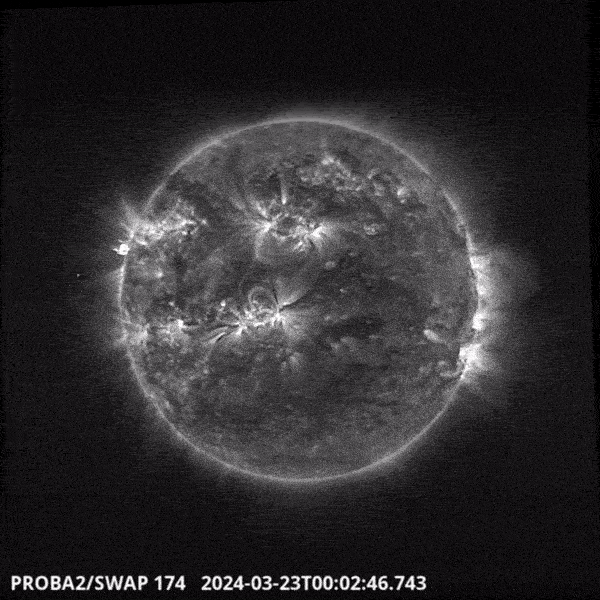
The Sun, which goes through peaks and troughs of activity, is currently ramping up to its ‘solar maximum’ in 2025. That means we’re likely to see stronger solar flares, and more regular bouts of space weather in the months to come.
With SMOS directly detecting what happens on the Sun, giving advance warning of GNSS disruption, and Swarm providing complementary data about what happens closer to home, we have a unique new perspective on the effect of space weather on Earth.
“Space weather may well originate outside our planet, but outages to navigation and power show it can have potentially hazardous effects here on Earth,” says ESA’s Director of Earth Observation Programmes, Simonetta Cheli.
“It’s exciting therefore to see two of our Earth Explorer missions combining to monitor solar events and to better understand how they affect our planet. It once again demonstrates the versatility and excellence of Europe’s Earth observation programmes.”
Staying vigilant
Monitoring space weather is a key activity of ESA’s Space Safety Programme, which is soon to be bolstered by ESA’s Vigil mission.
Vigil, which is due for launch in 2031, will monitor the side of the Sun, spotting areas of potentially hazardous solar activity before they rotate into view of Earth.
Vigil provides the first 24/7 operational data from deep space by ESA, increasing the advance warning of key space weather effects from 12-18 hours up to four to five days in advance. It will allow us to be much more prepared for hazardous solar events, including potentially destructive geomagnetic storms.
It will also give us a lot more information about just what may be heading our way.
We might have to wait a while for the results to come in. As Vigil is taking up a position 150 million km behind Earth, it’ll take 26 months after launch for any data to start coming in.
But when it does, along with the information gleaned from Swarm and SMOS, we’ll be better equipped than ever to understand the effects of space weather on Earth’s system.



